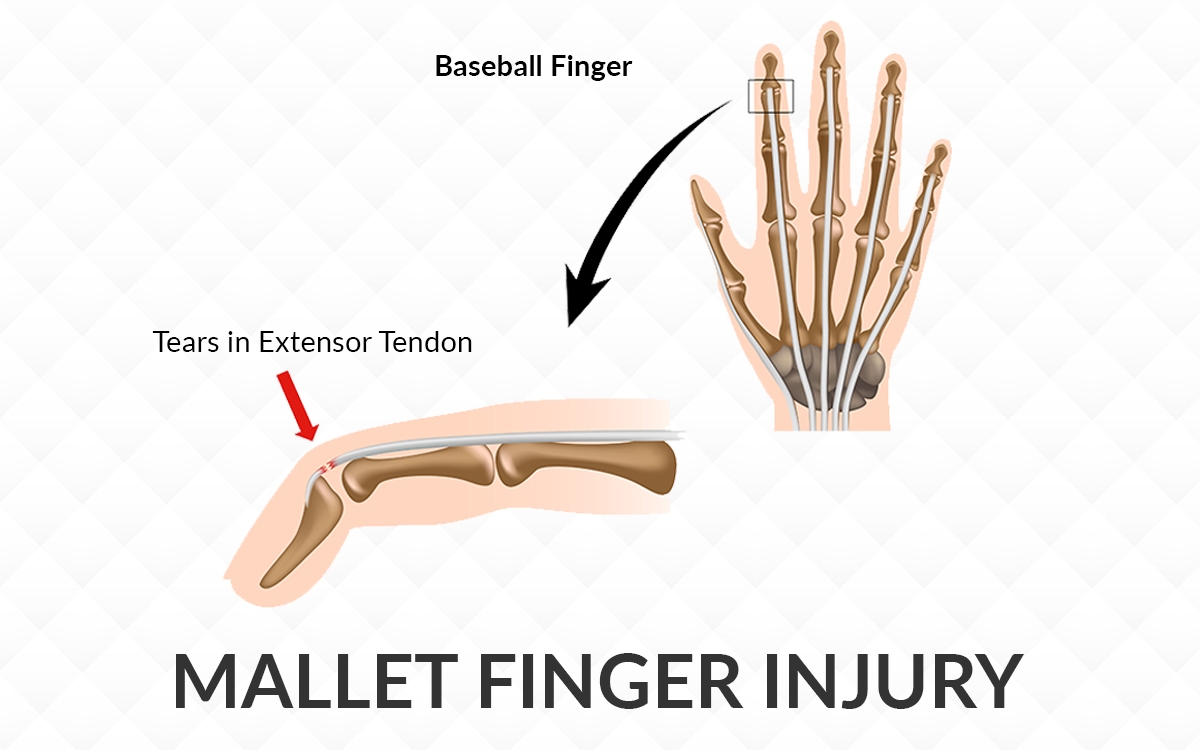
Summary
Also known as
- Drop finger
- Basketball finger
Causes
Injury caused when a ball hits the fingertip
Symptoms
- Swelling
- Bruising
- Pain
- Inability to straighten fingertip
Diagnosis
- Physical examination
- X ray
Treatment
- Non-Operative using splint
- Surgery is generally recommended
- When the joint is not properly aligned
- Nail bed avulsions
- Open injuries
- Neglected injuries with arthritis in the joints or swan neck injury
What is a Mallet Finger injury?
It is when the end joint of one of your finger will not straighten by itself and drops. It can be pushed straight but it will not stay in that position on its own.
There are two types of mallet injury:
- Tendinous – which is caused by an injury to the tendon that straightens (extends) your finger.
- Bony – Caused by an injury to the bone to which the tendon attaches.
Is it common?
Mallet Finger is a common injury and normally affects the dominant hand. It is also known as drop finger or basketball finger as the injury often happens when the ball that you are trying to catch or field hits your fingertip.
What are the symptoms of Mallet Finger?
Symptoms are swelling, bruising, pain and inability to straighten your fingertip unless you use your other hand to hold it up. If the nail is also injured and is detached from the nail bed or has blood underneath it; it may be a sign of an underlying bone fracture
How is it diagnosed?
Diagnosis is usually by examining your dropped fingertip. X-ray will show any bony fracture or if the bone is out of alignment.
How is it treated?
If mallet injury is left untreated it can lead to a deformed finger and eventually lead to a swan neck deformity.
Most Mallet Finger injuries are treated non-operatively. To treat the pain and swelling use ice, elevate your hand and fingers and take non steroid anti-inflammatory drugs. Splinting is usually the first line of treatment. The goal is to keep the fingertip straight in a splint until the tendon heals. A splint will usually be used for 6 weeks. Then the splint is used in the night for another 4 weeks.
Surgery is generally recommended for more complex injuries of mallet finger. For example:
- When the joint is not properly aligned
- Nail bed avulsions
- Open injuries
- Neglected injuries with arthritis in the joints or swan neck deformity
Results of surgery are good with almost full regain of movements, function and strength to the injured finger.
BMI Chelsfield Park Hospital
Bucks Cross Road Chelsfield ORPINGTON BR6 7RG
01689 877855
BMI The Blackheath Hospital
40-42 Lee Terrace Blackheath LONDON SE3 9UD
020 8318 7722
BMI The Sloane Hospital
125 Albemarle Road BECKENHAM BR3 5HS
020 8466 4000
Princess Royal University Hospital
Farnborough Common ORPINGTON BR6 8ND
01689 863223



